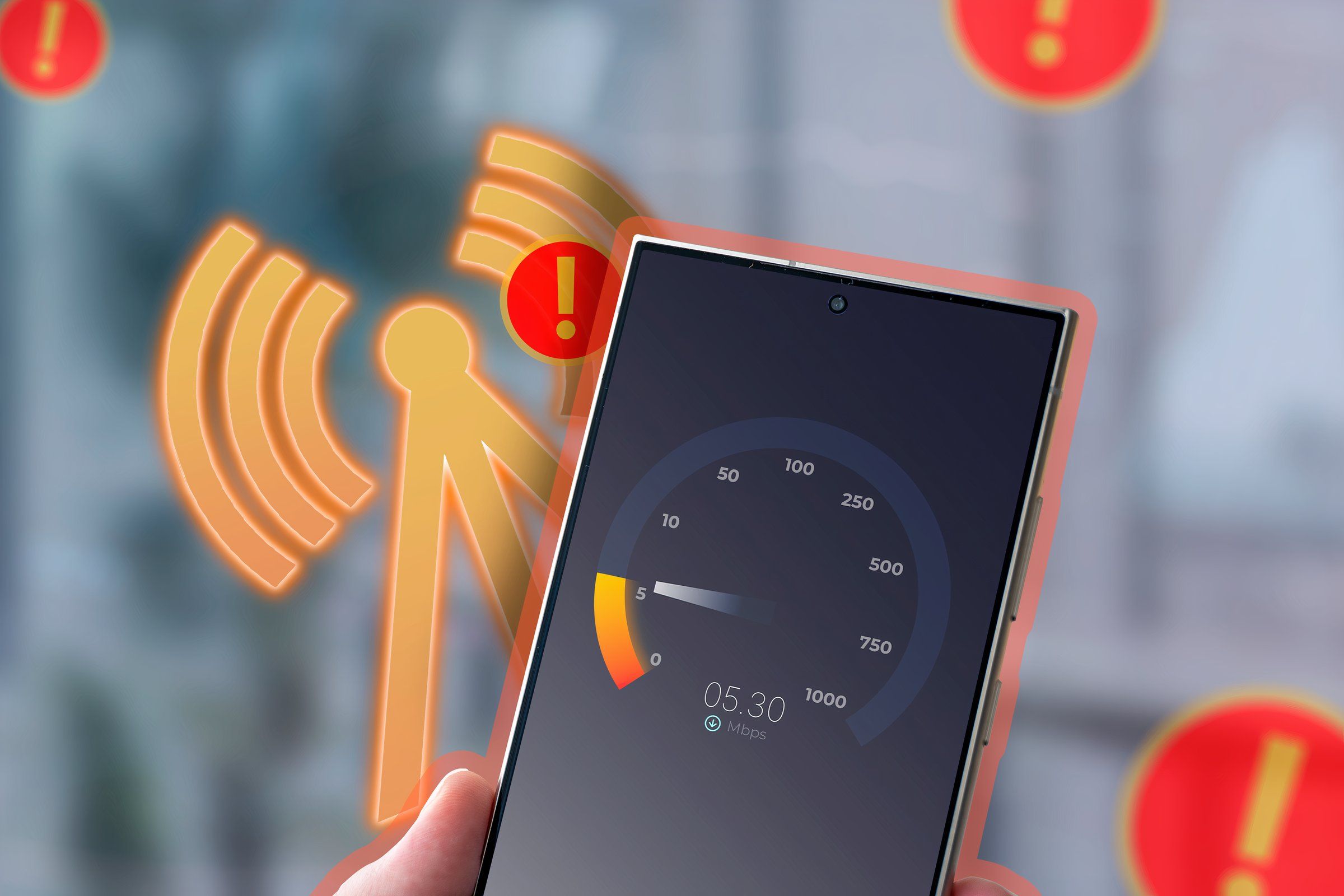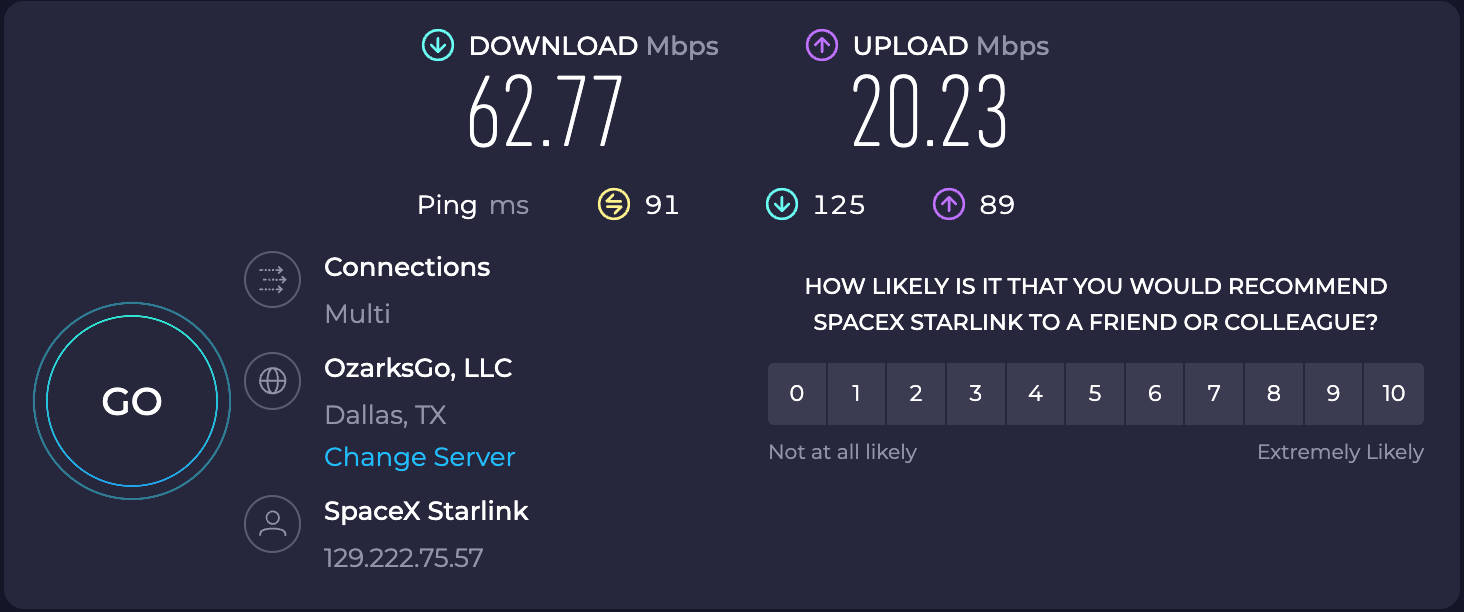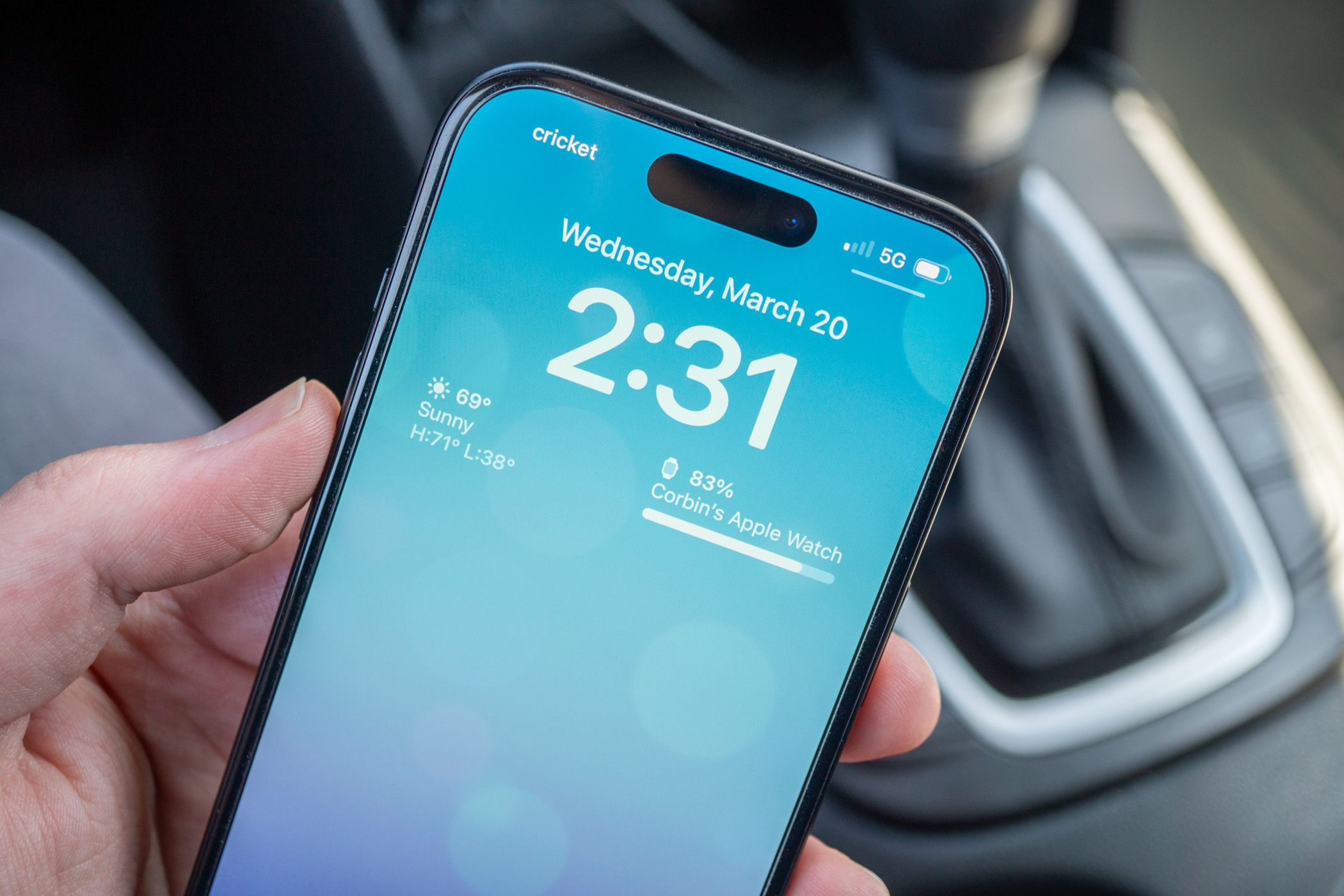
Is Your Smartphone's Data Speed Slower? Understanding Cellular Throttling

Is Your Smartphone’s Data Speed Slower? Understanding Cellular Throttling
Key Takeaways
- Slow internet speeds: You experience a noticeable decrease in internet speeds. Websites take longer to load, downloads are sluggish, and overall performance is slower than usual.
- Difficulty streaming videos or audio: Streaming videos or audio becomes a frustrating experience. Videos frequently pause to buffer or the quality is reduced. The same applies to audio streaming services.
- Buffering or long load times: You experience excessive buffering or long load times in addition to slow speeds and streaming difficulties. This is especially noticeable when trying to load content-rich websites or apps.
Have you ever been out and about and realized your phone’s data connection feels a lot slower than it should? Identifying throttling is crucial for ensuring you receive the data at the speed you pay for. But how can you be sure that throttling is happening to your phone? We’ll show you.
What is Cellular Data Throttling?

Cellular data throttling is a method that mobile carriers use to limit their network usage. Throttling is necessary for many networks to best utilize the available resources. Normally, carriers have a set amount of data that users can access, but once that data chunk has been used, the speed is throttled down to avoid abuse.
That’s why “unlimited” plans aren’t really unlimited . Users of “unlimited” plans just get a bit more use out of the network before throttling kicks in. Throttling, in its purest sense, only deals with data. There’s another process that network providers use to manage congestion on a network called “deprioritization,” but it’s not the same as throttling your data and is more of an issue with MVNOs such as Mint Mobile and Tello.
It can be frustrating for users who pay for an unlimited data plan and suddenly realize that they can’t access the speeds they originally paid for. It’s barely noticeable on a cellular phone when you switch from a 10Mbps connection to a 20Mbps connection. However, the difference between a 3Mbps connection and a 10Mbps connection is the difference between your Instagram scrolling or stalling.
Signs Your Data Might Be Throttled

So, how do you know if your cellular carrier is throttling your data? Most cell carriers throttle data at some point, but if you experience these symptoms, it’s a good sign that your provider is intentionally slowing down your connection speeds.
Slow Internet Speeds
One of the most obvious signs that your cellular data is being throttled is a noticeable decrease in internet speeds. If you find that websites take longer to load, downloads are sluggish, and overall performance is slower than usual, your data might be throttled. Compare your current speeds with past experiences or run a speed test to determine if there’s a significant difference.
Difficulty Streaming Videos or Audio
Throttled data can make streaming videos or audio a frustrating experience. If you notice that your videos frequently pause to buffer or if the quality of the video is reduced, this could be a sign of throttling. The same applies to audio streaming services like Spotify or Apple Music. If songs take longer to load or pause, your data might be throttled.
Buffering or Long Load Times
When your data is throttled, you may experience excessive buffering or long load times in addition to slow speeds and streaming difficulties. This is especially noticeable when trying to load content-rich websites or apps that require a significant amount of data. If you find yourself waiting longer than usual for pages to load or if buffering interrupts your browsing experience, throttling could be the culprit.
Inconsistent or Fluctuating Speeds
Throttled data connections often result in inconsistent or fluctuating speeds. You may notice that your internet speed varies significantly throughout the day or even within a single browsing session. If you experience periods of relatively average speeds followed by sudden slowdowns, this could indicate that your carrier is throttling your data after you’ve reached a certain data threshold.
How to Confirm Data Throttling

A speed test during the flight using Ookla at speedtest.net
Like any good detective, you should perform some tests to ensure that you’re dealing with data throttling. The tests are a bit different from those you undertake to check if your ISP is limiting your wired connection . A speed test at different monthly intervals will confirm whether you get the speed you pay for. Speed test apps or websites like Ookla’s will give you an idea of what speed you’re currently getting. The best way to do this scientifically is to set a baseline. Here’s how we do this:
- Do a speed test of your cell connection at the start of your billing period. We’ll use this as the “control,” or the speed when your usage starts.
- Take speed tests throughout the month. Make a note of the usage before each speed test.
- Depending on your usage, you may notice a slowdown in speed towards the end of your billing period.
- If you do, it’s a clear sign that your network usage is being throttled due to overuse.
You should also compare your findings with someone else (preferably with the same make and model as your phone, who doesn’t use their mobile data quite as much). This will give you a third variable to compare against—whether the cell network throttles everyone during their billing period after a certain point or whether it’s usage-based.
Some cell contracts have a stated value for usage before throttling kicks in. Reading the fine print of those contracts will give you certainty about whether your data will be throttled and at what point this will happen. However, not all cell contracts carry this, and reading the contract is the only way to know for sure.
Other Factors That Can Affect Data Speeds

Corbin Davenport / How-To Geek
Just because your mobile internet is slowed doesn’t necessarily mean you’re dealing with data throttling. Several other factors can affect your data speed, including:
- Signal strength and coverage: Weak signals or poor coverage in certain areas can result in slower data speeds and inconsistent performance.
- Device limitations and compatibility: Older devices or those not fully compatible with your carrier’s network may experience slower data speeds.
- VPN usage: A VPN can sometimes slow down your internet connection due to the additional encryption and routing processes involved. Using it to attempt to hide your data usage from your carrier won’t work .
How Can You Deal With Throttling?

The methods of dealing with cellular data throttling are far more limited than dealing with it on a wired connection . If you suspect your data’s being throttled, you have a few things you can do. Among them are:
- Contact your carrier: ISPs are generally open about their throttling practices, and some even spell out the limits in their contracts . Knowing your usage limits lets you manage whether you’ll have to deal with slowdowns.
- Set data usage limits: Both Android and iOS allow for setting data usage limits, with either a hard cut-off or a warning to let users know when they’ve hit the limit. This will help manage throttling by warning you when you’re approaching the data cap. I use this to manage my own data consumption on mobile.
While it might be tempting to consider getting a different carrier, remember that all ISPs will throttle your data at some point. It’s just what they need to do to maintain their network properly. However, there are times when you’ll experience low data transfer speeds and you aren’t near the data cap. What’s that about?
Not All Slowing is Throttling
Many people use the term “throttling” to mean a slowed data connection , but that’s not always the case. Sometimes, when the network is congested and many users demand service in an area, the network performs a procedure called deprioritization.
This means that you’ll get lower speeds because other people in the vicinity need service. A good example is if you’re at a concert venue. With so many people using their phones for social media, there will be a slowdown due to deprioritization.
Switching carriers is an option, but in some cases, it won’t make a difference. After all, the infrastructure can only support so many users.
Should Data Throttling Bother Me?
Most users’ most significant issue with data throttling is that they don’t get the speeds they pay for. Some see offering unlimited data as an underhanded advertising tactic. Data throttling happens regardless of which carrier you choose, so instead of trying to fight it, it might just need to be something you accept. Taking proactive measures like monitoring your usage ensures you don’t hit the data cap, which will lead to the throttling of your mobile data.
Also read:
- [New] In 2024, Zoom Meeting Organization Tips for Professionals
- [Updated] The Ultimate List of Serene PC Gaming for 2024
- Apple's Latest Launch Preview: Dates Revealed, Speculation Confirmed, and What to Expect Next
- Can I use iTools gpx file to catch the rare Pokemon On Nokia C12 Pro | Dr.fone
- Get a $50 Discount on Top-Rated Weber Electric Grills - Exclusive Offer From ZDNet!
- Harnessing Ocean Waste for Sound: The Innovative Production Technique Behind Recyclable Marine-Plastic Speakers
- Honor Their Memory with Savings: Get a Discounted Segway Max G2 Electric Scooter for Memorial Day – Shop at ZDNET Now!
- Imminent Eco-Crisis in Apple Production Revealed | Tech Innovation Today
- In 2024, How To Optimize Playback Settings in Snapchat Applications
- Innovative Bioenergy Breakthrough: Mushrooms Meet Tech in the Quest for Greener Power Solutions | ZDNET
- Installing Updated GeForce RTX 2070 Graphics Card Drivers on Windows Systems
- Introducing the Galaxy S23 – A Leap Forward in Samsung’s Journey to Environmental Responsibility | ZDNET
- Is the Lomi Magic Real? An In-Depth Evaluation of the Revolutionary Indoor Composter | Insights From ZDNET
- Lomi's Revolutionary Home Composting Solution: Unveiling the Secrets of Effortless Waste Transformation
- The Pinnacle of Macro Photography and Cinematography for 2024
- The Ultimate Method for FB Photo and Video Downloads
- Ultimate Webcam Selection for Podcasting for 2024
- Title: Is Your Smartphone's Data Speed Slower? Understanding Cellular Throttling
- Author: George
- Created at : 2025-01-01 23:49:11
- Updated at : 2025-01-06 09:48:33
- Link: https://hardware-tips.techidaily.com/is-your-smartphones-data-speed-slower-understanding-cellular-throttling/
- License: This work is licensed under CC BY-NC-SA 4.0.